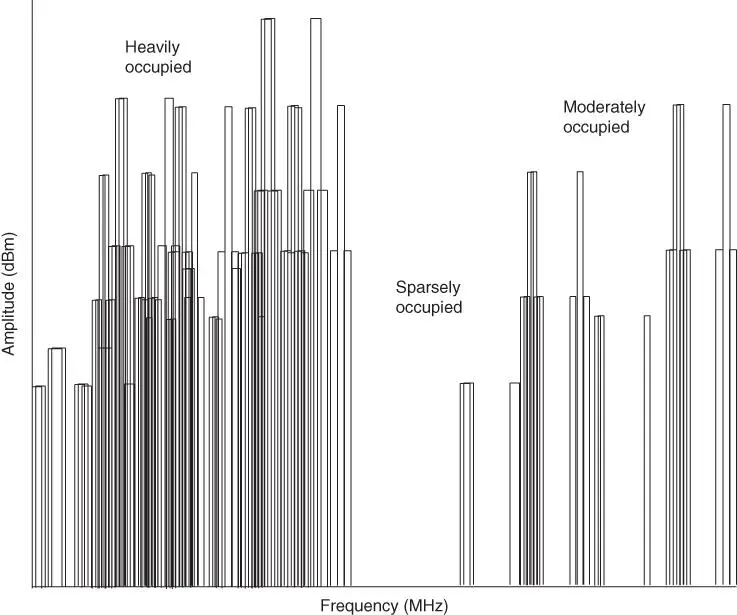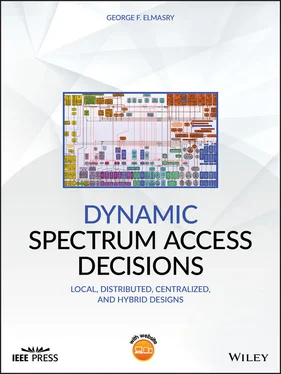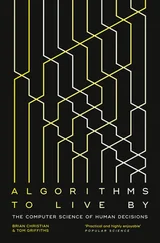4 Euclidean space based detection. As explained in Chapter 1, geolocation and timing are an essential part of comprehensive spectrum sensing. DSA can include:geographical space spectrum sensingangle of radio frequency (RF) beam spectrum sensing.
Depending on the system under design, certain sensing techniques would have more importance than others. For example, in typical commercial opportunistic spectrum use applications (e.g., a secondary user using a primary user spectrum opportunistically), time, frequency, and power techniques combined with Euclidean distance based techniques may be the most important sensing techniques to consider. In some defense applications, hopping pattern spectrum sensing can be critical for some SigInt needs. In commercial and defense applications, finding the modulation technique and spread spectrum codes can be important to identify the characteristics of a known signal occupying a certain bandwidth (e.g., a commercial cellular signal). While in defense applications this identification of a known commercial signal presence can rule out the presence of malicious users (e.g., jammer), in some commercial and defense systems this signal identification can mean the ability of the secondary system to use the sensed frequency band with a signal that appears as background noise to the primary user (this shared spectrum use is known as underlay transmission) or it can mean ruling out using this frequency band altogether.
Before proceeding with spectrum sensing techniques, let us reference some definitions that are common in the literature:
A primary user is the system that has rights to the bandwidth. This system can be oblivious to the presence of a secondary user.
A secondary user is the system that needs to detect the activity of the primary user and can only take advantage of the unused parts (holes) of the primary user spectrum. In some cases, the secondary user may use the sensed spectrum with a very low power signal that ensures the primary user rights are not compromised.
Spectrum opportunity is a band of frequencies that are not being used by the primary user at a particular time in a particular geographic area.
This book's approach to DSA is not limited to the case of a primary user and a secondary user. Even with communication systems that have allocated spectrum to share with no primary and secondary users rules, DSA can allow a set of heterogeneous networks to dynamically share the allocated spectrum based on up‐to‐date spectrum sensing information.
DSA can result in spectrum sharing, which can take different forms as follows:
Underlay transmission. With this transmission, the secondary user may transmit in parallel to the primary user if the secondary user signal does not interfere with the primary user signal. The definition of interference here means a certain threshold that the primary user can tolerate. Typically, a secondary user can use spread spectrum with large spreading codes (and lower bit rate) to ensure that the secondary user signal appears as background noise to the primary user signal. Notice that the underlay transmission concept can be used with defense applications to generate signals with low probability of detection and low probability of interception (LPD/LPI). There is a proposed rule before the FCC that makes the underlay transmission party “hold harmless” the primary user. In the commercial world, a primary user can file a claim against an underlay transmission party for harming its OTA use. In the defense world, and during war time, this is a hard claim to make.
Overlay transmission. With this transmission, the primary user and the secondary user may cooperate in a way that allows the secondary user to use the frequency band under certain conditions. Notice that in defense applications overlay transmission can have a different meaning. Defense applications can become a secondary user of commercial frequency bands in peace time using underlay transmission rules, but in war time, the same systems can overlay the defense signal over the commercial signals with or without cooperation with the commercial systems.
Opportunistic transmission. With this transmission, the secondary user can only use the primary user frequency band if there is no primary user transmission.
Cooperative transmission. Within a MANET, nodes can share a frequency band divided into sub‐bands (slots) in a cooperative manner relying on geographical separation rules and spectrum sensing. In a large‐scale set of heterogeneous networks, networks can also share different frequency bands relying on distributed cooperative techniques and/or a centralized DSA arbitrator decision‐making process. Other known concepts of cooperative transmission include: time division multiple access (TDMA), where multiple users share the same frequency band cooperatively in different time slots frequency division multiple access (FDMA), where multiple users share the same frequency band cooperatively in different frequency sub‐bands carrier sense multiple access (CSMA), where nodes sense if the carrier is busy with transmission and only transmit if the carrier is available code division multiple access (CDMA), where different simultaneous transmissions use different spreading codes that makes a communicating pair of nodes see the other communications as background signals orthogonal frequency division multiple access (OFDMA), where interference between orthogonal signals is minimized.
This chapter focuses on spectrum sensing techniques independent of how spectrum sharing occurs. Certainly, one must consider the importance of the information obtained from a spectrum sensing technique versus the complexity of the technique. With the existence of different options for dedicated spectrum sensing hardware, the system designer must understand all the aspects of spectrum sensing techniques before making an educated decision on which hardware to include in a system design, how to configure it, and how to interpret the spectrum sensing information obtained from that hardware. The system designer also has to be able to make the most out of same‐channel in‐band sensing. This chapter addresses the first steps towards grasping the many facets of spectrum sensing through covering the foundations of many of the known techniques to help the system designer select the most appropriate sensing technique for a given system.
Figure 2.1illustrates how sensing a wideband of frequency can be expressed as spectrum usage in terms of frequency and amplitude. A spectrum sensor can divide this wideband into small sub‐bands, with each sub‐band defined by a frequency range where the spectrum sensor performs sensing over all of the sub‐bands in parallel. An important objective of spectrum sensing is the ability to sense a wideband of frequency divided into sub‐bands so that the information output of the spectrum sensor can help the DSA techniques find different spectrum opportunities.

Figure 2.1Sensing a wide band of spectrum.
Notice how the vertical access unit in Figure 2.1is dBm, which stands for decibels (dB) below one milliwatt (mw). This unit is commonly used for energy detection which uses the one milliwatt as a reference and bridges the gap between SNIR, which is in dB, 2and energy detection in watts. With this normalization, a signal received at 1 mw maps to 0 dBm while a signal received at 0.1 mw maps to –10 dBm. Energy detection can be expressed as received signal strength indication (RSSI), which uses the unit dBm. This conversion uses the formula dBm = 10 × log( P /1 mw), where P is signal power.
2.2 Time, Frequency, and Power Spectrum Sensing
Читать дальше













